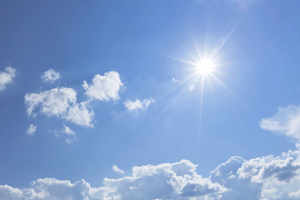Climate Adaptation – Outdoor Air Quality and Health

EPA works with states, communities, and tribes to assure healthy outdoor air quality. Great progress has been made in achieving national air quality standards, which EPA established in 1971. These standards are periodically updated based on the latest science. Changes to the environment and weather patterns complicate efforts to attain and/or maintain safe air quality.
Ground-level ozone and particulate matter are distinct concerns. These pollutants are the result of emissions from diverse sources that travel long distances and across state lines. Both types of these air pollutants are anticipated to increase.
Ground-level ozone
Ground-level ozone, or "bad" ozone is formed through chemical reactions with nitrogen oxides (NOx) and volatile organic chemicals (VOCs) in the presence of sunlight. Warming temperatures complicate efforts of many communities to attain and/or maintain the health-based air quality standard for ground-level ozone.
Particulate matter
Wildfires are a source of particulate matter. Longer and more intense droughts and extreme heat events increase the likelihood of wildfires. As a result, wildfires are expected to increase in many parts of the country. Such fires release significant amounts of particulate matter into the air and threaten public health.
